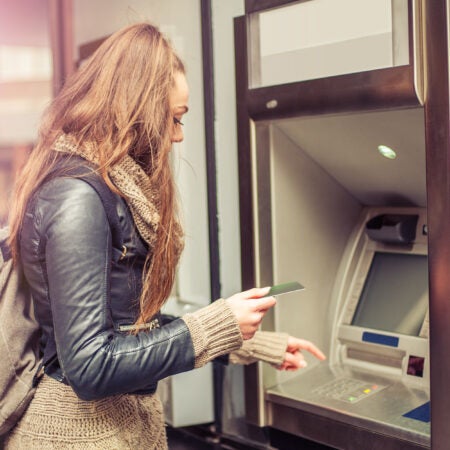
Money is something that’s on the forefront of most Americans’ minds. Saving money can be a struggle for the average person with a pile of bills that need constant attention. While saving money can be hard, it’s not impossible. There are lots of ways to save and reach your financial goals.
Why you should be saving your money
Everyone can benefit from saving money no matter what their finances look like. The future is unpredictable, and savings can be a great safety net to fall back on.
Saving is one of the best ways to get you through emergencies. Saving also comes in handy when you’re making a large purchase. When you save at least part of your income you have money that:
- Improves financial stability
- Is useful in emergencies and job loss
- Helps you reach financial goals
- Protects your assets
- You can use for retirement
Best ways to save money
It may seem difficult to save, especially if you’re living paycheck to paycheck and struggle to keep up with your bills. But if you analyze your finances and keep track of spending, it’s doable. Once you come up with a strategy and set some goals, you’ll be on your way to saving money.
Here are a few money-saving tips to take with you through 2021.
Set savings goals
You know you want to save money in 2021, but you’re not sure how much you actually want to save. Settings goals for your savings can really help you. Come up with some short-term goals, like “I want to save $400 in two months.” Then figure out how much from each paycheck you’ll need to set aside and start saving that amount. $400 in two months is $50 a week.
Besides having short-term goals for your savings, think about the long-term goals. It could be setting a goal to have an emergency fund by the end of the year that covers three months of expenses.
Cut expenses
One of the best ways to save in 2021 is to reduce your expenses. If you don’t need to buy it, don’t spend it. Eating out a lot, signing up for paid subscriptions, and only buying brand name products add up. If you can cut your expenses, it will probably be easier to reach your savings goal.
In order to cut unnecessary expenses, it’s a good idea to go through your monthly statements to see where you spend the most money. See if there’s an area that you can cut spending, like at the grocery store. Or, if you eat out 20 times a month, see if you can cut it down to 10.
Once you know which expenses to cut, you can set a budget for different things like rent, utilities, groceries, and even eating out. If you stick to your budget, you should have some extra cash to save. Your budget isn’t set in stone either, so if you need to adjust it next month, that’s alright, as long as you’re saving enough money.
Find better deals
Do you have a landline telephone, cable and internet? Are you unhappy with your home and auto insurance rates? It’s a good idea to comparison shop to see if you can cut down on these monthly bills. Many cable companies offer up a promotion if you threaten to cut their services.
If you know you need to buy something, see which store is selling it at the best price. Some stores will even price match if you find better deals on the same item.
Pay credit cards on time
Paying your credit card on time is good for your credit score. It’s also good for the bank account. If you miss a payment, then you’ll likely end up paying late fees. If paying your credit card bills on time is going to be an issue, try automating payments from your checking account to your credit card account so that you don’t have to worry about missing the payment. It may not seem like a lot, but if you’re late each month, those fees can add up and make it more difficult to save more money.
Where to put your savings
Saving money doesn’t have to be difficult. Once you get into the habit of saving, it becomes automatic. The first step is determining your goals and deciding how to save your money. Once you start saving, you need to decide where to put your money. Do you want to invest it, or do you want access to quick easy cash? Here are some options that can help you determine where to put your savings.
Savings account
A savings account is a low-risk savings option. The majority of savings accounts cost nothing to open and yield interest, so you can see your savings grow. There is no risk with opening a savings account as they are insured by the Federal Deposit Insurance Corporation (FDIC). Your money is safe from economy pitfalls as long as it is below $250,000. Plus, you have access to cash if you need it quickly.
When it comes to savings accounts, you also have different options. Accounts at traditional brick-and-mortar banks typically yield less interest. If you have a good relationship with your bank, this may be a reason to choose a traditional savings account. But if you open an online savings account, you’ll usually see a higher annual percentage yield (APY) on your money. Online bank accounts typically pass savings onto customers from not having any operational costs. Even with an online bank account, you can still access your money through an ATM whenever you need to.
Emergency fund
An emergency fund can be very helpful. If you face a job loss, medical emergency, or accident, it can cover a lot of your expenses. You can choose to put your emergency fund into a checking account. Or you can put away cash if you think that’s a better option. Whatever you decide to do, a good rule of thumb is to put away three to six months’ worth of expenses. You also want the fund to be easily accessible because you’ll never know when you need it.
Certificate of Deposit (CDs)
The majority of banks and credit unions offer CDs and are FDIC-insured. CDs are a longer-term investment but they often yield a higher percentage rate. CDs usually require a larger sum of money to open and don’t allow the account holder to touch the money for a predetermined amount of time, sometimes for one year and sometimes for five.
If you do withdraw money before the specified time is up on the account, then you’ll be subjected to penalty withdrawal fees. If you’re comfortable investing some of your savings for a longer period of time, then this is a great option. Like savings accounts, most CDs are FDIC insured.
Money market accounts
A money market deposit account is another type of savings account. But it’s different because it offers account holders benefits of both checking accounts and savings accounts. They usually offer a higher interest rate than standard savings accounts and are FDIC-insured. They also usually require a higher minimum balance than a regular savings account to open.
Account holders can write checks from their money market account, but this is restricted to a certain amount per year. The bank issues usually issues penalty fees if the number of available monthly transactions is exceeded.
Savings bonds
Another way many people invest their savings is through bonds. A bond is a purchase you make that helps to fund government projects. The U.S. Treasury Department issues the securities. They pay interest for using your money.
Interest rates for savings bonds fluctuate with the economy but are usually around the same as savings accounts with an FDIC-insured bank. Purchasing a bond is a low-risk investment as your money is fully backed by the U.S. Government. This is another long-term investment, so you might not want to invest all of your savings in these as you won’t have access to your money for awhile. Saving money is an important habit. It’s important to set goals to help you understand how much money you should save. You should also research which way is best to save money for your personal finances. Once you start saving money, you can start to see your savings grow and hopefully save thousands of dollars.






